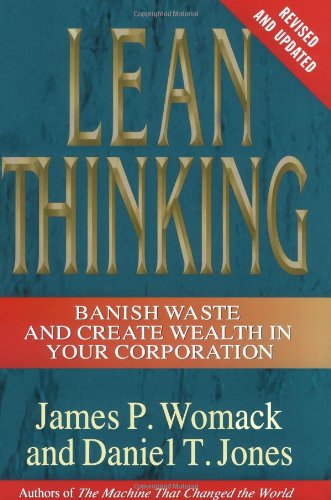Category: Value-Delivery
(22 von 100)
Why: I need this to make my blog writing process leaner and deliver more value.
Goal: learn the thinking process behind Lean and how to do it.
Table of Contents
Action: Ask customer to specify the desired quality, price, and time.
3 Key Concepts
- Wastes are activities that absorb resources, but create no value.
- Let your customer define value of your service.
- Value Stream goes beyond teams, departments, and suppliers.
Summary
The first book on the list that actually concerns my profession. As an engineer that works in Japan for a German company in the production plant, each concept reminded me of my own experience on the topic. Only now with a better understanding of the thinking process behind it!
Wastes are activities that absorb resources but create no value.
In Japanese, we called wastes Muda. There are 7 typical wastes, and the tip to memorize (in Japanese) them is かざってとうふ (KaZaTTeToUFu).
- 加工 (Kakou):over-processing of parts due to poor tool and product design
- 在庫 (Zaiko):inventories more than absolute minimum
- 作りすぎ (Tsukurisugi):over-production ahead of demand
- 手持ち (Temochi):waiting for the next processing step
- 動作 (Dousa):unnecessary movement
- 運搬 (Unpan):unnecessary transport of materials
- 不良 (Furyou):defective parts
Lean Thinking is an antidote to wastes
It provides
… a way to specify value,
… line up value-creating actions in the best sequence,
… conduct these activities without interruption,
… whenever someone requests them,
… and perform them more and more effectively.
Specify Value
It can only be defined through a dialog with the end-user, in terms of quality, price, and time.
Analyze Value Stream
Specify activities required to design, order, and provide a product to customers. Value stream happens through 3 critical management tasks of any business.
- Problem-solving: from concept → detailed design and engineering → production launch
- Information management: from order taking → detailed scheduling → delivery
- Physical transformation: raw material → finished product in hands of customers
Correctly executed value stream analysis will show you 3 reoccurring…
- Steps that unambiguously create value.
- Steps that create no value, but unavoidable due to limited technology or assets.
- Steps that create no value, and avoidable.
Flow: make the remaining (value-creating) steps flow without interruption. It is counterintuitive. We are born to favor Batch-and-Queue. To avoid the habit, we should focus on the product and its need from customers, rather the availability of an organization and equipment.
Pull: we called it “Kanban“. simply make what customers tell you they need. The ability of this implementation is to design, schedule, and produce exactly when the customers need them.
That means no more sales forecast! Also, you will have a more stable demand, because customers stop anticipating your delivery cycle and stock clearance discount.

Lean Check: with the above-mentioned steps; specify a value, analyze value stream, make it flow, and make upon order, you should be able to achieve…
– 50% reduction in product development time,
– 75% reduction in order processing time,
– 90% reduction in physical production time.
If not, you are doing something wrong. (quote the author)
Lastly, make it to perfection.
There is no ending to the process of reducing effort, time, space, cost, and mistakes while getting closer to a product that customers actually want.
During the implementation, the most important ingredient is “Transparency”. Make data comprehensive to everyone.
I am looking forward to making my blogging lean. The book gave a perspective of how it can be implemented for services and more.
So tell me guys what do you value in blogging? Quality-wise, money-wise, and time-wise.
Goal check: I learned how Lean production is created and implemented.
Wasu’s Review
( 5.0 / 5.0 )
Get this book on Amazon here!
Bonus: The heartbeat of the Lean system is Takt time, as it sets the pace of your production. Here is how you calculate it.
Takt time = available production time/rate of customer demand.
Ex. customer demands 10 parts per day, and your workshop operates 480 minutes per day.
Takt time = 480 / 10 = 48 min per part.


Pingback: Smart Services 101 - Wasu Mekniran